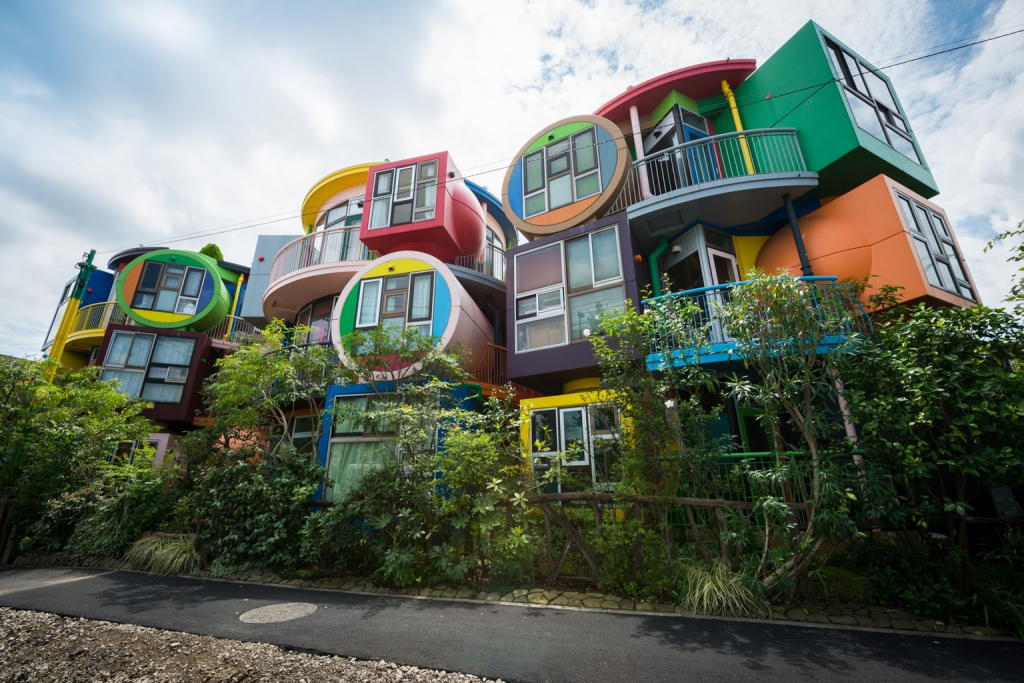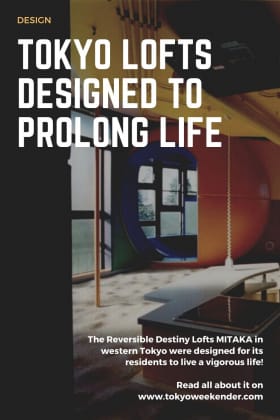You may recognize this inhabitable work of art from that one episode of Girls (HBO) or from the numerous brand photoshoots taken on site. But the intention behind the Reversible Destiny Lofts MITAKA is far less cute and colorful than what meets the eye.
As if dropped by a game of Tetris in the middle of west-Tokyo suburbia, these chromatic lofts that jut out like playthings were in fact designed to cheat death. We recently attended a tour of this spectacular landmark, and here’s what we learned.
Architecture Inspired by Helen Keller

© 2005 Estate of Madeline Gins. Reproduced with permission of the Estate of Madeline Gins
The Reversible Destiny Lofts MITAKA were designed in 2005 by revolutionary architect duo Shusaku Arakawa (Japan; 1936-2010) and Madelaine Gins (USA; 1941-2014). Inspired by the philosophy of procedural architecture, the lofts were drafted to bring full attention to the body and constantly stimulate and challenge its inhabitants, helping them lead long and ample lives. To Arakawa and Gins, comfort was considered an unconscious slope towards death.
Said Arakawa at the time, “Most people, in choosing a new home, look for comfort: a serene atmosphere, smooth walls and floors, a logical layout. Nonsense. People, particularly old people, shouldn’t relax and sit back to help them decline. They should be in an environment that stimulates their senses and invigorates their lives.”
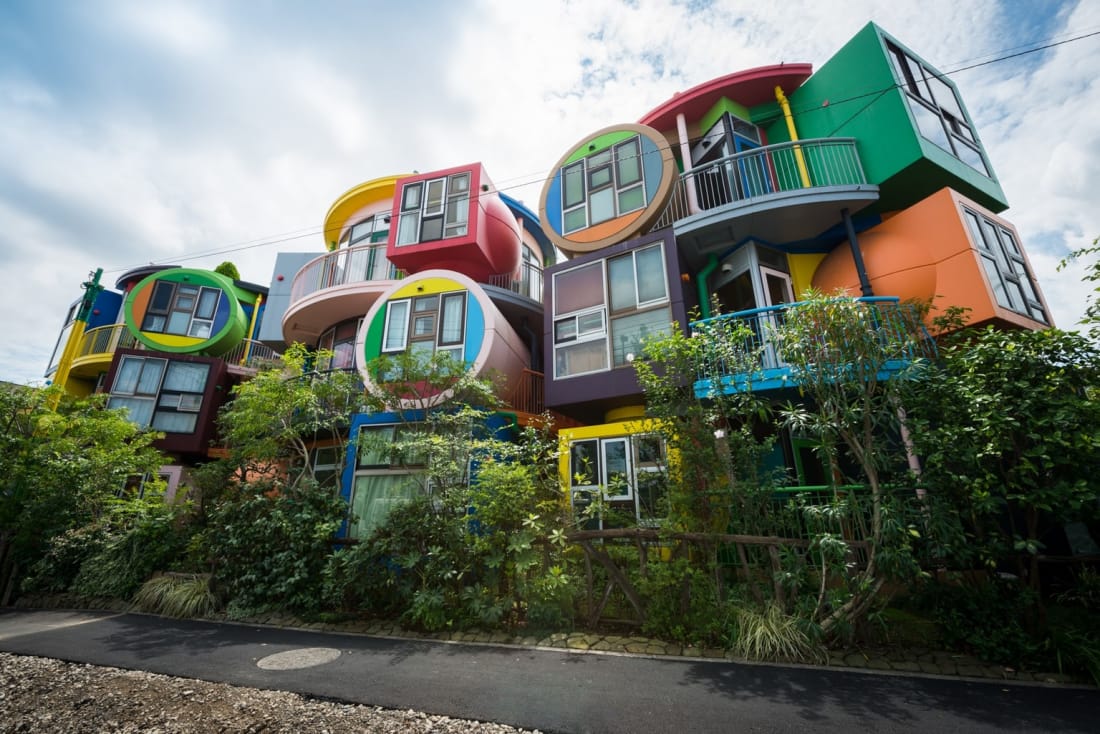
© 2005 Estate of Madeline Gins. Reproduced with permission of the Estate of Madeline Gins
Arakawa and Gins dedicated the complex to the memory of Helen Keller, who overcame two major sensory barriers to become a notable author, lecturer and political activist – conquering a “reversible destiny” of her life.
Perhaps it’s also one of Keller’s most notable quotes that encapsulate the living space – “Life is either a daring adventure, or nothing.” Because what this three-building, nine-room landmark provides is indeed an everyday adventure for its residents. The mere acts of walking, lounging, observing and utilizing space and furniture become a constant, conscious interaction.
While permanent residents occupy some of the units, one is oftentimes reserved for tours, and others to rent as office space or on airbnb. Inside the vacant apartment we were able to gather the full potential of the loft as a blank space – albeit absurdly colorful and interesting.
Architecture of Color
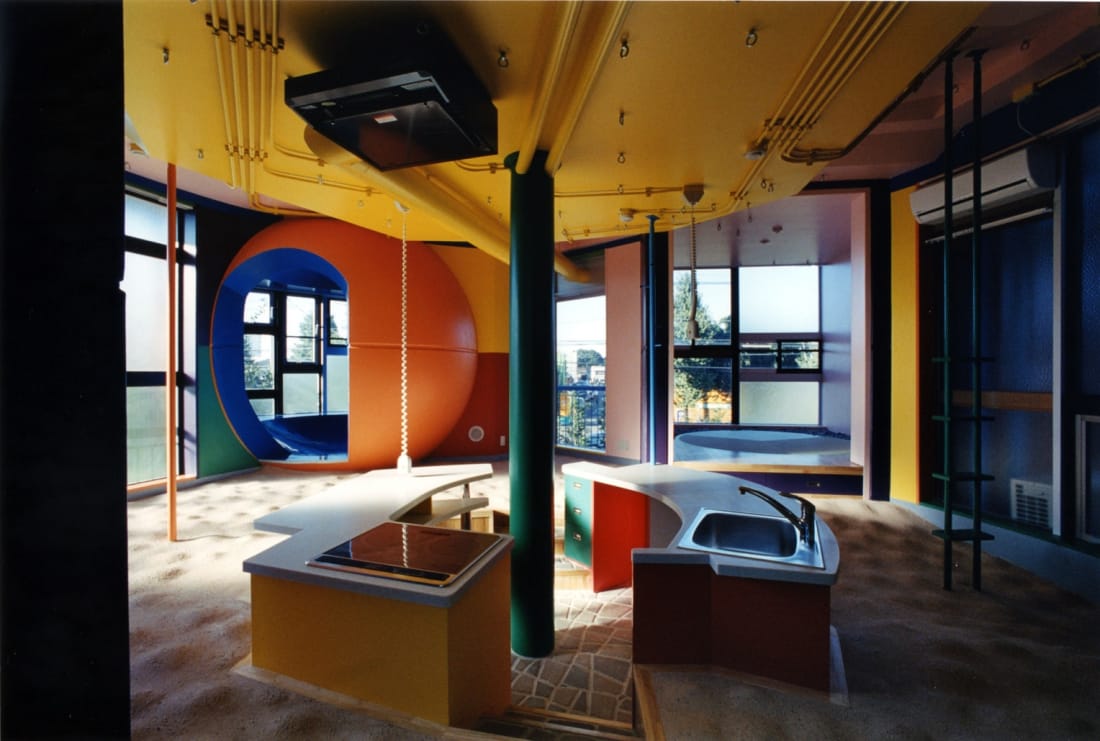
© 2005 Estate of Madeline Gins. Reproduced with permission of the Estate of Madeline Gins
Both the interior and exterior are painted in 14 different colors, and at any vantage point, you can see at least six colors at once. While we are able to count color when there are only a few in sight, the human brain usually shuts off if there are more than three to four colors at a time, deeming an object as just “colorful.”
By having a multichromatic living space, this challenges and awakens the brain to interact with various slabs of hues surrounding it at once. And while it may appear funky and bright, it’s made to actually mirror the naturally colorful outside world. Almost as if you are ambling inside a giant flower.
Architecture of Body-Center
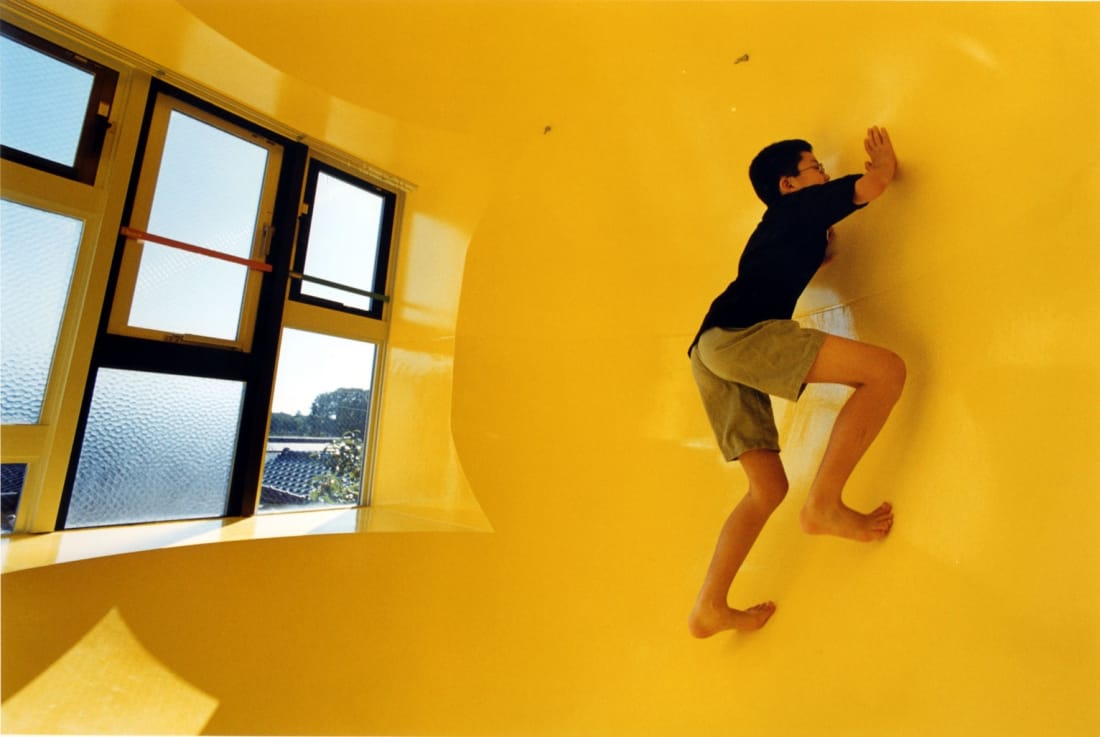
© 2005 Estate of Madeline Gins. Reproduced with permission of the Estate of Madeline Gins
The floor is unusually earthy and bumpy. Unshod – as always when indoors in Japan – we found ourselves naturally moulding our feet over the bumps so that they pushed up against our arches when we walked. Moving about felt like one big foot massage, in fact. Later we were told that this natural desire has been intentionally satiated by the architects; human feet were designed to clamber rocky and uneven surfaces, and smooth tiles and wooden floors don’t appease their innate intention. But these groundbreaking, bumpy floors appeal most to our senses and body-center-gravity. Our tour guide, Takeyoshi-san, explained how they also create shadows, so we’re able to understand more the depth of what we’re moving and living on.
Architecture of Shape and Perception
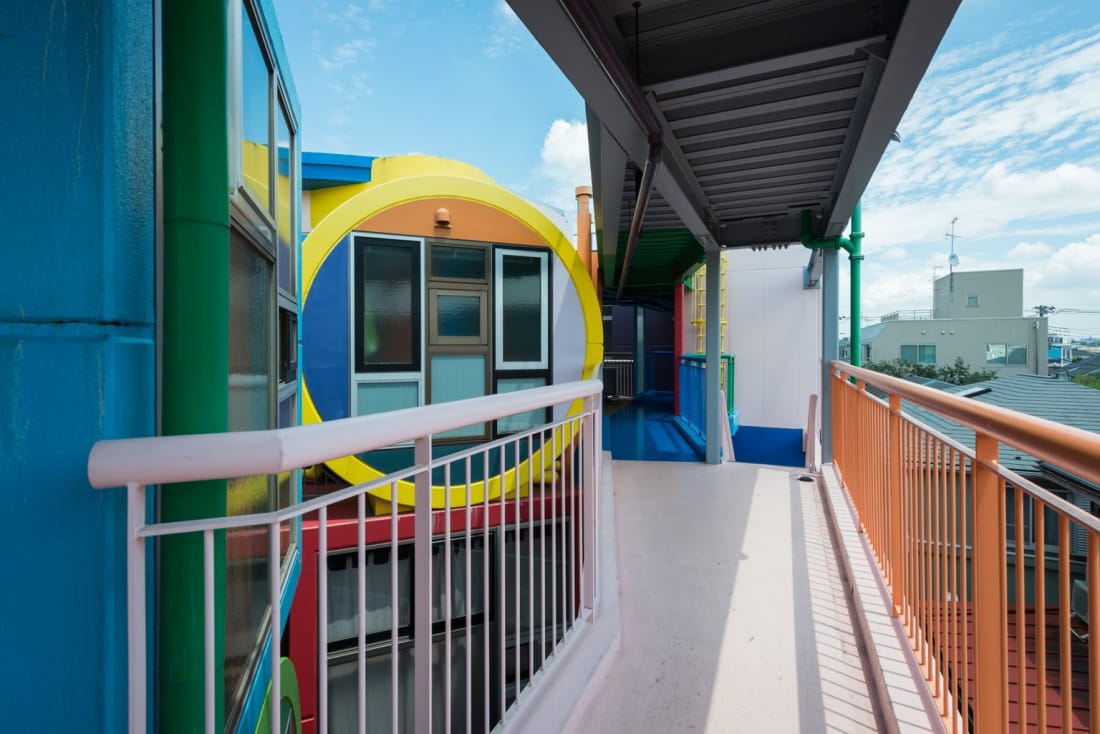
© 2005 Estate of Madeline Gins. Reproduced with permission of the Estate of Madeline Gins
Spheres, tubes and cylinders form the primary shape of the space. Working with the feeling of enclosure or entrapment, the circular rooms like all-enveloping cocoons add a feeling of discomfort and heightened spatial awareness. How do you get out if a room gravity seems to be pulling you into? The floors are also asymmetrical, meaning you can easily trip if you’re not careful. And to get the veranda, you have to crawl out of a small window close to the ground. Perceptions become subjective interactions – for example, the yellow room can act as a playroom for kids while for adults, it may be a cozy reading nook.
Architecture of Hanging Furniture
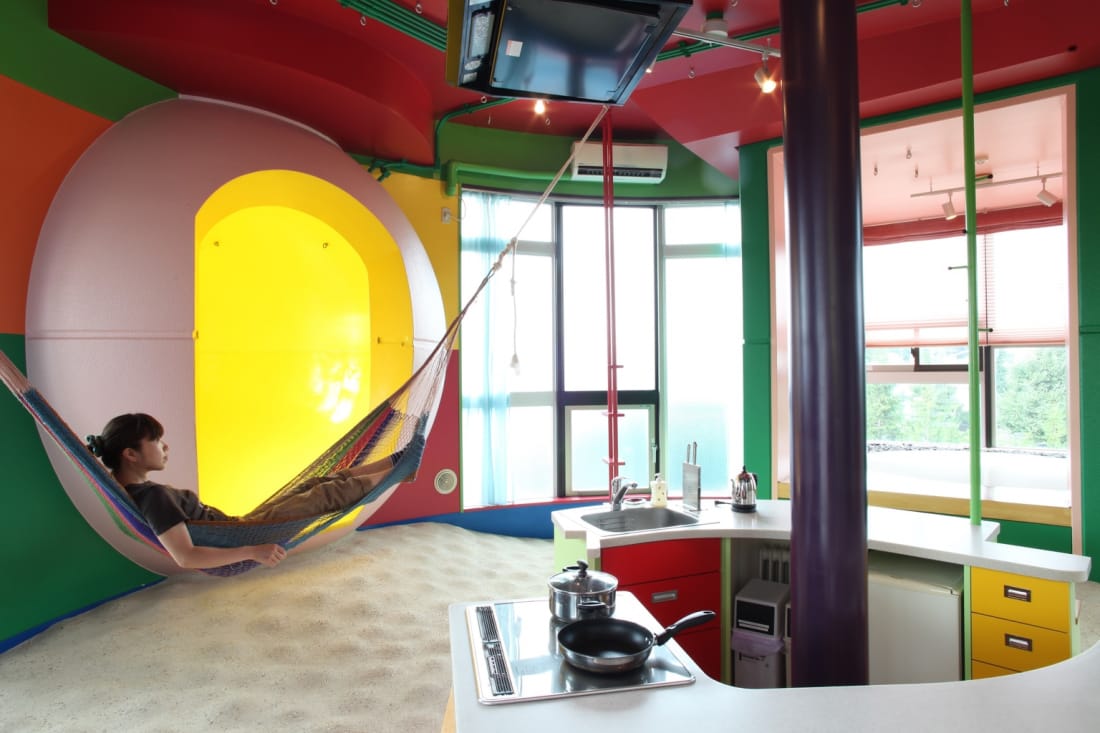
© 2005 Estate of Madeline Gins. Reproduced with permission of the Estate of Madeline Gins
Because of the undulating floors, most of the general floor space becomes obsolete and unfit for furniture. “But if you think about it, hooks are furniture too,” Takeyoshi-san told us as he pointed to the ceiling, riddled with eye-bolts. How poetic we thought, as we hung our bags and coats from the ceiling; what an incredible way to use space that is oftentimes forgotten and unused.
Although we must admit, we did become a tad anxious watching people pass under our clunky winter coats which felt very in the way. But the hooks really are great if you use them with intent. From them you can hang a hammock in any direction, light bulbs, plants, cooking utensils – you name it. Because if you do rent out one of these apartments, it’s time to get creative with the wasted space above.
Architecture like Medicine
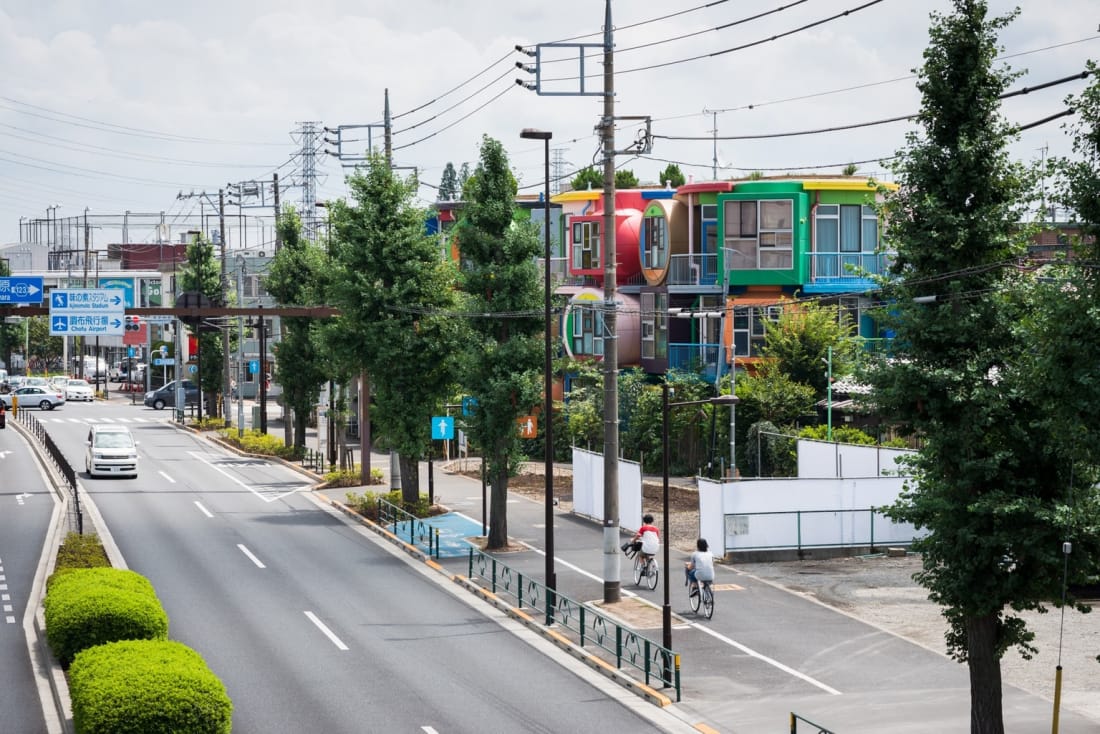
© 2005 Estate of Madeline Gins. Reproduced with permission of the Estate of Madeline Gins
In Arakawa and Gins’ eyes, living space is like medicine – so it too needs directions for use. The 32 instructions are considered “required reading for reversible destiny loft dwellers.” Here are some examples:
- #5 Go into this unit as someone who is at the same time both 2 or 3 years old and 100 years old.
- #9 At least once a day, amble through the apartment in total darkness.
- #23 Use your loft’s brightly colored, shaped volumes to increase your ability to remember things and events
Perhaps we all have something to learn from this living-space philosophy. We may not all get the chance to reside in works of art, but we are in control of how we think, feel and interact with the world around us. Taking a different route home from work, filling out a crossword puzzle, or even brushing your teeth with a different hand can help stir up the figurative dust we allow too easily to settle on our routines. What Arakawa and Gins are saying is that there is a way to stay invigorated and mentally young – and essentially they ask – why aren’t we all doing it?

